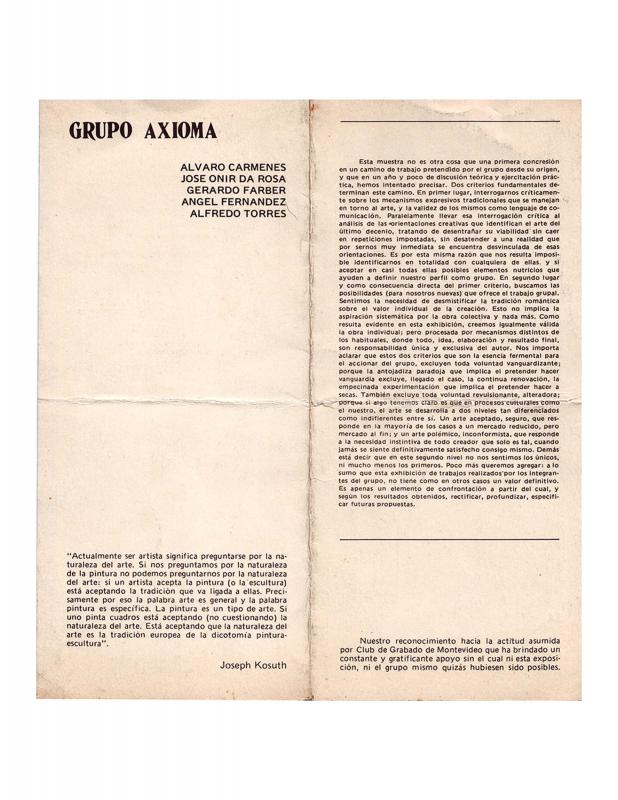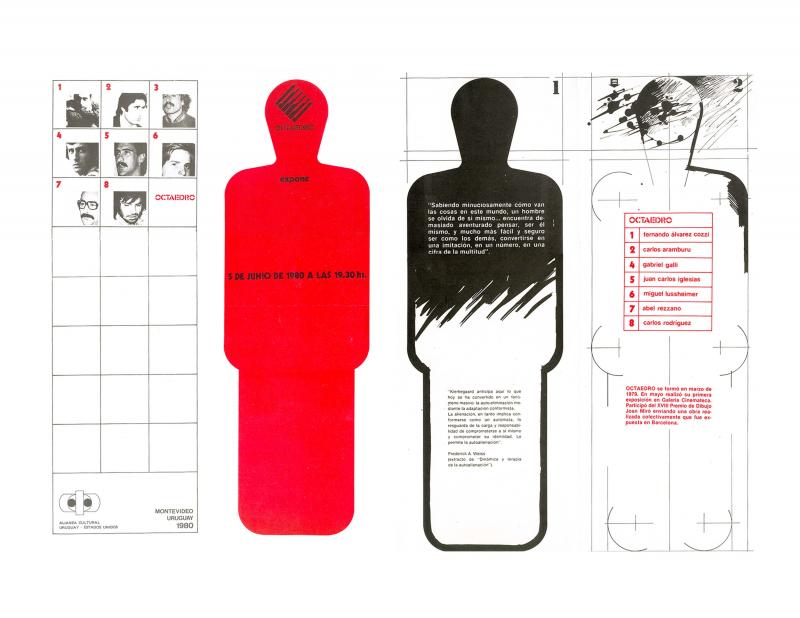This document written by Juan Carlos Iglesias in the form of a didactic scheme included arrows, index points, drawings, and text. Through simple language, the artist criticized the artistic situation in Uruguay, arguing that it was closely defined and linked to aesthetics and focused more on the question regarding the “sense of beautiful and decorative,” according to the professional criteria of the “art world,” including the art critics and art market. This situation generated a vicious cycle of stagnation especially for churches, but in particular for the Grupo Octaedro. Therefore, the need to disassociate themselves with any critique committed to opt for a presumed type of public and or market was among its postulates, something that it shared with the artistic majority of young people at that time.
In just two years, the Grupo Octaedro generated intense activity focused on experimental artistic practices in Uruguay, and surprisingly as well, forms of rebellion against the prevailing difficult sociopolitical circumstances. The group was formed at the end of 1978, and during the final stage of the military dictatorship (1973−85), defying interpersonal isolationism promoted by the regime. The group was formed shortly before the emergence of other artistic groups such as Los Otros and Axioma. [Please refer to the ICAA digital archive for the following texts on the subject: “Una narrativa sobre el arte uruguayo en dictadura. Las instalaciones y estrategias conceptualistas de los grupos Octaedro, Los Otros y Axioma,” by May Puchet (doc. no. 1251139), “AXIOMA” (unsigned) (doc. no. 1250717), “4 Ambientación grupo Los Otros,” by the group Los Otros (doc. no. 1251116) and “Grupo Axioma,” by Grupo Axioma (doc. no. 1250744)]. [The group] initially consisted of Fernando Álvarez Cozzi (b. 1953), Carlos Aramburu (b. 1951), Carlos Barea (b. 1954), Juan Carlos Iglesias (b. 1956), Miguel Lussheimer (b. 1961), Abel Rezzano (b. 1936), and Carlos Rodríguez b. 1951), and were mostly from the CEA (Centro de Expresión Artística), directed by Nelson Ramos (1932– 2006).
The group was known for its debates, readings, and reflections on the nature of art, the role of the public and artistic circles, among other such subjects. [Please refer to the ICAA digital archive for the following texts by the Grupo Octaedro: “Octaedro expone” (doc. no. 1260107) and “Octaedro. Expone Grupo Octaedro” (doc. no. 1260081)]. Some of these ideas were disseminated in invitations to exhibitions, especially in deliveries of Mail Art where clippings of photocopied books, comics, and drawings were added to the envelopes designed with the inscription Octaedro Informa. [Please refer to the ICAA digital archive for the text: “Creatividad y desafío,” by Fernando Álvarez Cozzi (doc. no. 1260353)].







